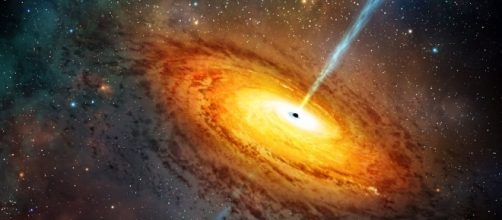The discovery of over 60 new Quasars by group of astronomers last year opened new possibilities to get a deeper understanding about the origin and evolution of the universe. Scientists think that the discovery may unravel the secretes of the universe origins. The light from quasars, which outshines the light of other objects in their vicinity, may allow astronomers to study the most distant universe and get a deeper understanding on the physics of primordial galaxies. These distant objects may also help understand the densest regions of the early universe.
What are quasars?
This is a type of astronomical body that lies at the very center of galaxies where infalling matter feeds a Black Hole. It consists of a supermassive black hole around which an accretion disk of gas is orbiting. The in falling gas causes a release of energy in the form of electromagnetic radiation, including radio, infrared, visible, ultraviolet and X-ray wavelengths. The most energetic quasars exceed the luminosity of the Milky Way by thousands of times. These bodies have redshifts that range from 0.056-7.085, which place them from 600 million to 28.85 b8illion light years away.
The most distant quasar is 28.85 light years away
Quasars are the most distant astronomical objects in the universe.
The light that is detected from a quasar has to travel billions of years before reaching earth. the most distant quasar discovered to date is 28.85 light years away from the earth at a redshift of z=7.085. It´s believed that the light emitted by this astronomical body occurred when the universe was 770 million years old. The light astronomers see from these bodies reveal how the quasar looked billions of years ago; it´s like looking into the beginning of the universe.
The scientifically advantages of studying quasars
The study of these far away and energetic objects may allow scientists to get a deeper introspective into the fact that nearly all known galaxies have a black hole at their core. It will also help understand the way in which galaxies form and evolve. All of this knowledge will allow scientists to understand the origins and evolution of the universe.

